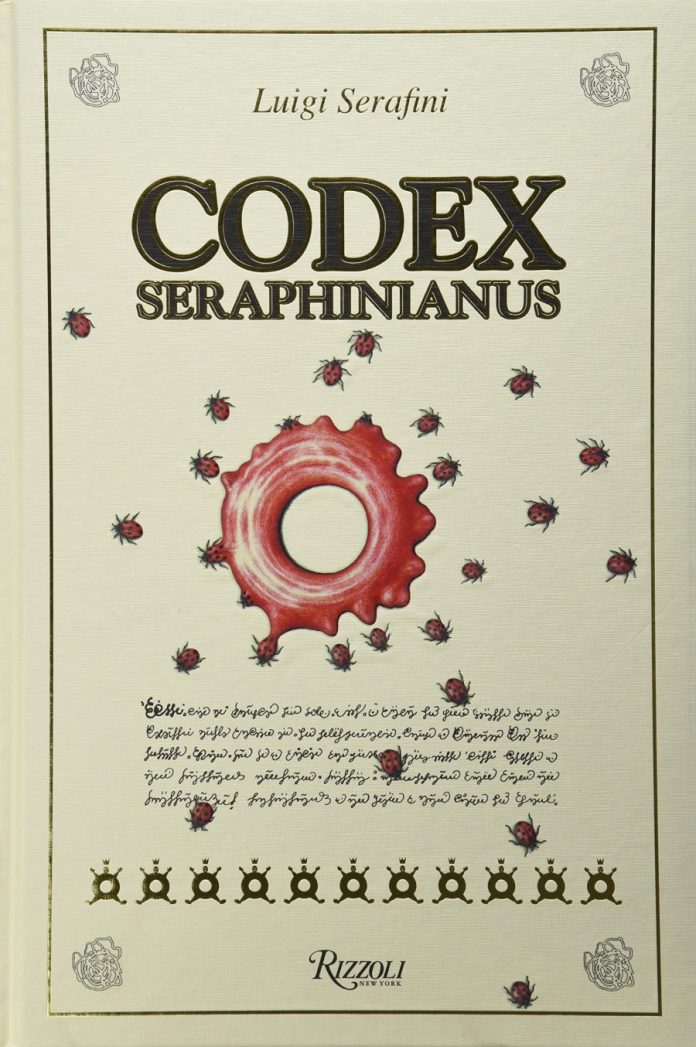
The Codex Seraphinianus is a book we haven’t read. As it’s rare, we could only find hardcover copies costing £60 in England. In North America, it’ll cost you nearly $80. But it’s also a book no one has ever read as it uses Luigi Serafini’s constructed language.
The Italian artist decided to invent an indecipherable encyclopedia of an imaginary world. It first launched in 1981, yet it remains difficult to come across hard copies.
Thankfully, there’s a fair bit of information about it available online. So, let’s have a gander at what this is all about.
Explorations Into the Bizarre in Codex Seraphinianus
The only way we could find anything out about this work was by going around online, looking at the images, and watching a bunch of videos.
Serafini hasn’t shrouded the work in mystery and hidden himself away. He’s very open about the many illustrations he created. But the book is still thought of as one of the weirdest in history.
In basic form, it’s a manuscript presented as fact of a strange and fantastical world not entirely dissimilar from Earth.
It’s easy to compare it to the Voynich manuscript, which is a bizarre thing from an unknown author. It dates to the 15th century and is likely just a bit of fun, but some people think it’s a gift from aliens or whatnot.
Of that work, he told Wired magazine back in 2013:
“After reading it I came to the conclusion that it is a fake. The Holy Roman Emperor Rudolf II loved ancient manuscripts; somebody swindled him and spread the rumour that it was original.
The idea of made-up languages is not new at all, think about Alessandro Bausani and the Markusko language he documented in his booklet Le lingue inventate or Giuseppe Tucci, Fosco Maraini and the many investigations of ISMEO (Italian Institute for Middle and Far East).
They explored remote regions of Asia, discovered archaeological sites and shed new light on cultures and languages. What I want my alphabet to convey to the reader is the sensation that children feel in front of books they cannot yet understand. I used it to describe analytically an imaginary world and give a coherent framework.
The images originate from the clash between this fantasy vocabulary and the real world. It’s every artist’s dream to shape his own imagery. The Codex became so popular because it makes you feel more comfortable with your fantasies. Another world is not possible, but a fantasy one maybe is.”
Serafini, then, was going outright for artistic creativity—with a heavy leaning towards surrealism.
Yes, there are some very odd images in the Codex Seraphinianus. That’s cemented its reputation as a delightfully peculiar oddity.
Images repeatedly consist of inexplicable and bizarre flora, fauna, animals, fashion, food, and behaviours.
Some of the creatures displayed appear to be hybrids—horses with maggot appendages that require wheels. There’s a steampunk quality to it, laden with abstract science-fiction concepts.
The images of food, for example, show bananas with a gashapon quality—the Japanese vending machines with the cute little toys inside. Elsewhere, pears bleed and require bandaging.
This is all accompanied by Serafini’s made up language, of course, which adds an eerie quality to the book. As if it is very real and from some distant land we’ll never visit.
And it all looks rather magical. If you’re able to fork out for Serafini’s book, it looks like it’s well worth tracking down and adding to your book collection.
One to spook your literary friends with.
About Luigi Serafini
Now 69, Luigi Serafini lives in Milan where he’s worked as an architect and a designer. The Codex Seraphinianus is his most famous book.
In 1984 he also illustrated one called Pulcinellopedia, but he used a pseudonym for that: P. Cetrulo. Apparently he has other finished projects but they’re not available to the public.
Although several journalists have tracked him down for interviews, he remains obscure. He has no social media presence (blasphemy!) and although he created a website for his work… it’s down. And has been since 2009.
So here we have a gentleman who appears quite happy to stay away from the limelight – for the large part. But whose works have a definite sense of wonder to them. Marvellous.
